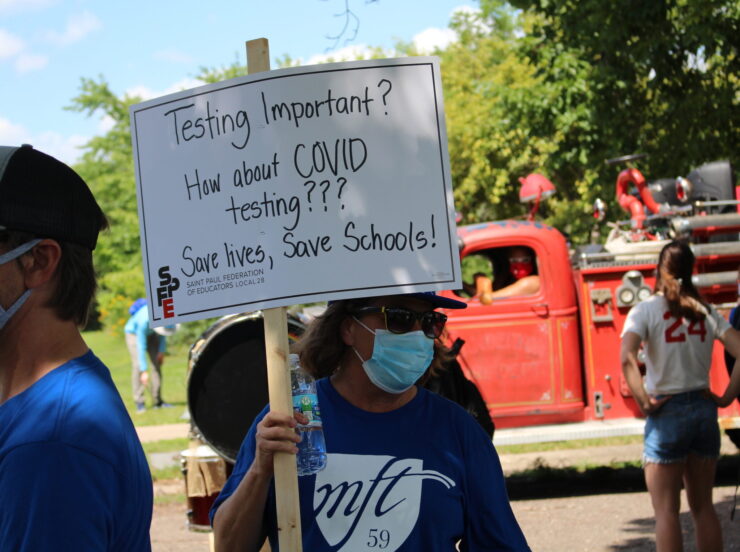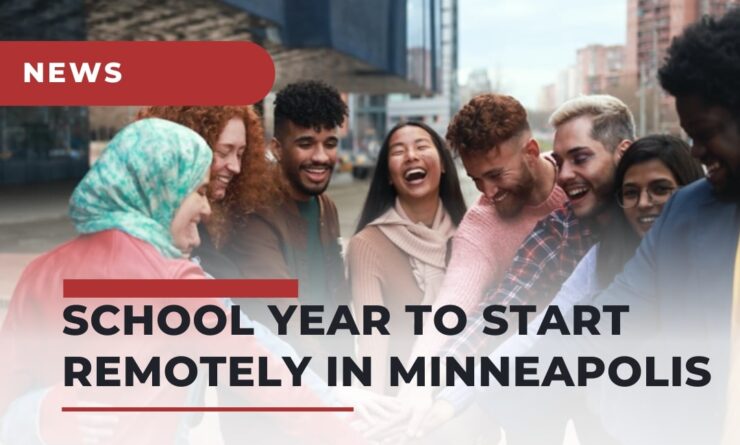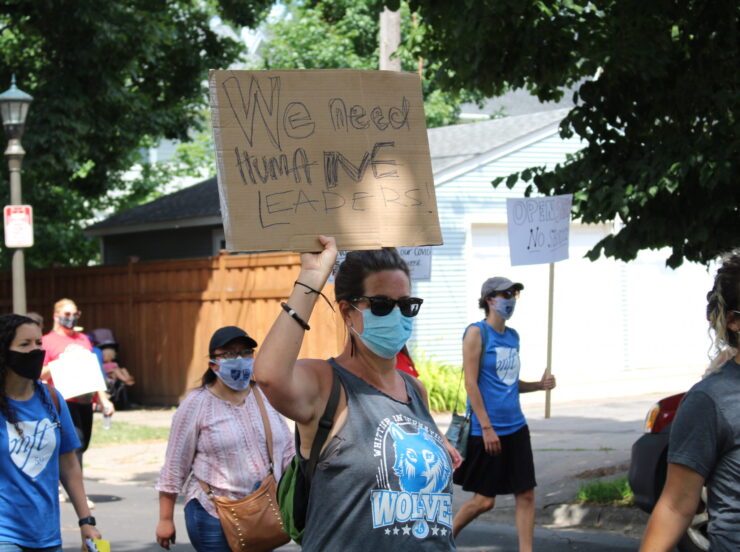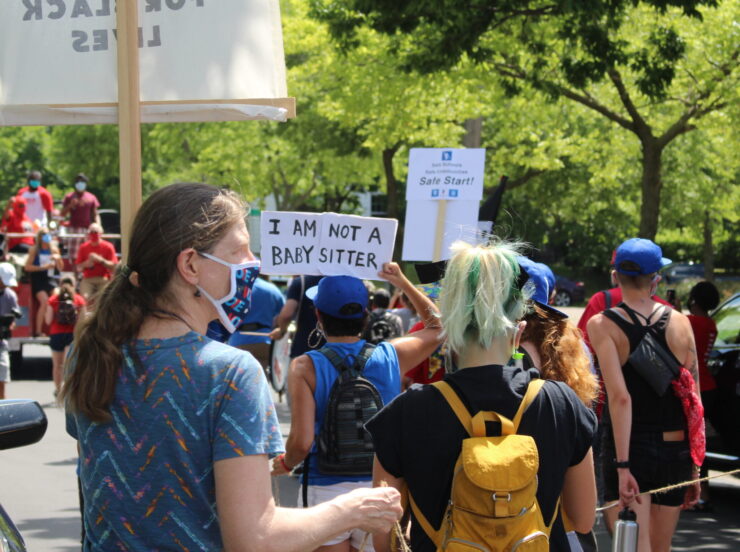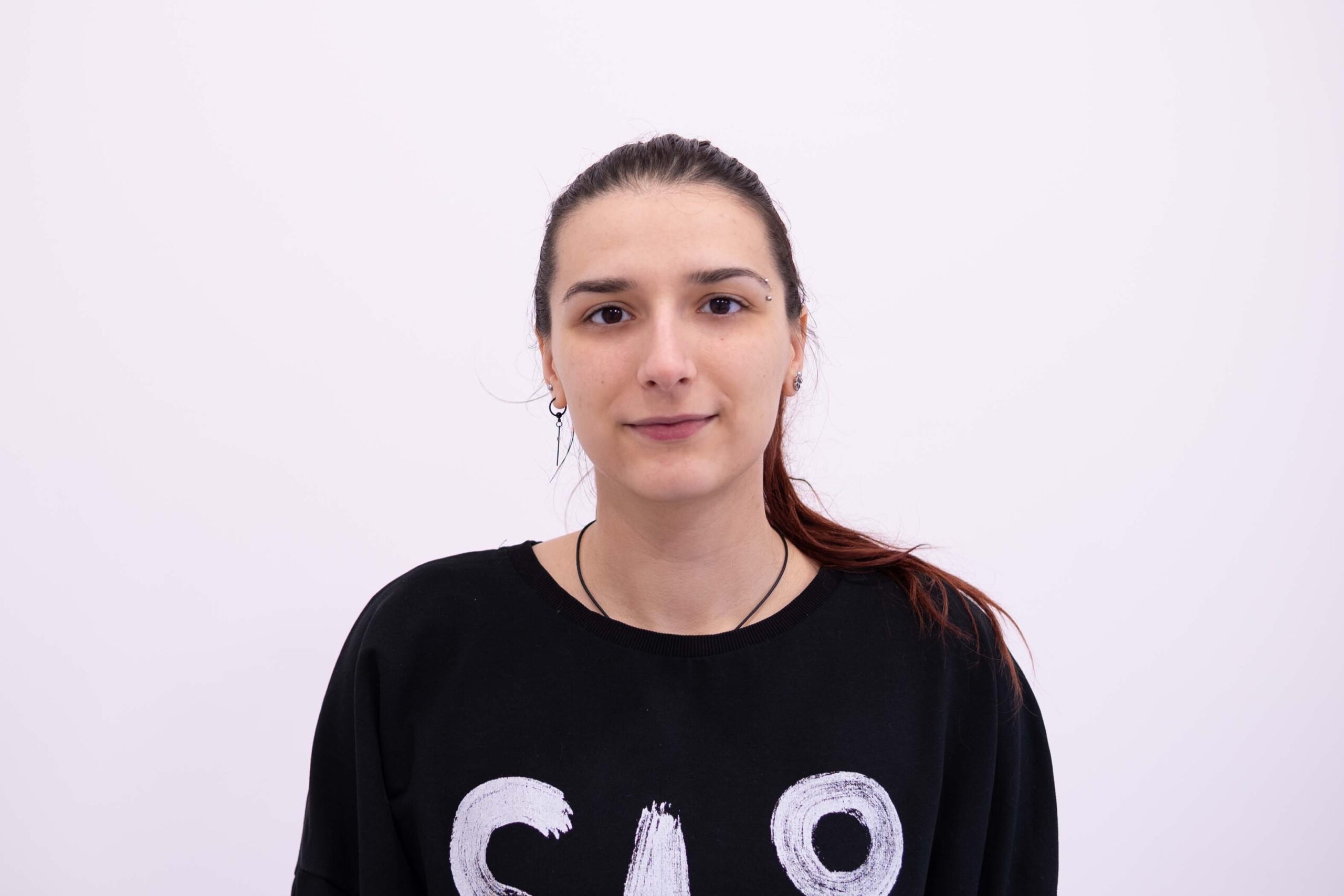In returning to remote education this September, Minneapolis Public Schools (MPS) will offer a mix of live and recorded online classes and limited in-person supports — such as tutoring and technology assistance — to students, who will again be graded on an A-F curve.
District officials offered more details on start-of-year plans at a virtual School Board meeting on Aug. 4, though many questions remain about how remote education will work in practice.
It’s still unclear how much time students will spend in live virtual classes, though officials said that students in grades pre-K-8 will have online “circle time” or morning meetings each day. It’s also unclear is who will have access to in-person support services and where those services will be offered.
Superintendent Ed Graff said the goal is to return to in-person classes at some point this year, but officials say that remote learning will continue until there are fewer COVID-19 cases in Minneapolis and more teachers and staff are comfortable with and capable of returning to school.
Before we continue with this article, you might find it interesting to read about public schools in Southwest Minneapolis losing more students than expected this year!
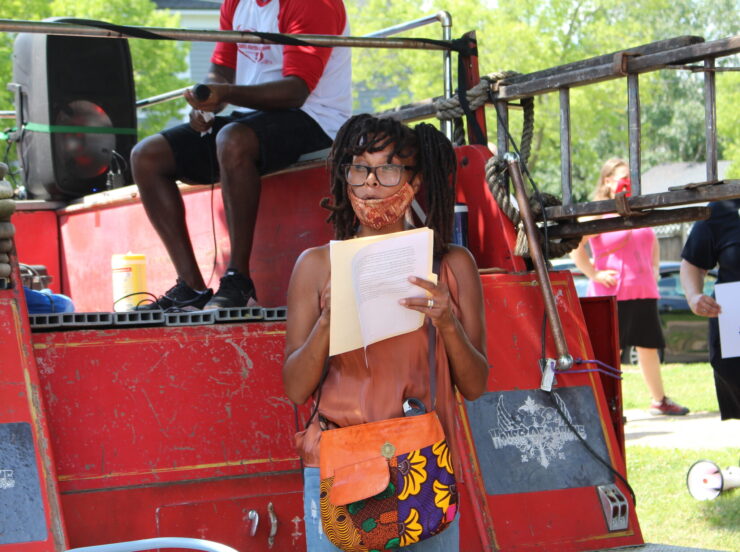
An MPS spokesperson said the district hasn’t decided how much COVID-19 would need to decline in Minneapolis to precipitate an in-person return. Based on the 14-day rate of COVID-19 in Hennepin County, the district would be eligible to start the school year in a “hybrid” model, according to state Department of Education guidance. Schools are only barred from opening if their countywide case rate exceeds 50 per 10,000 residents.
But districts can be more restrictive, and MPS says it’s particularly concerned about its Black and Hispanic communities, whose students comprise half the district’s population and who have been disproportionately affected by the coronavirus.
As of Aug. 4., the 14-day rate of COVID-19 cases was 54 per 10,000 among Minneapolis’ Black residents and 58 per 10,000 among its Hispanic population, compared with 27 per 10,000 citywide, Graff said.
The district spokesperson also said there haven’t been any benchmarks created for evaluating staff appetite for returning to in-person classes. Over half of the 4,329 staff surveyed in July said they’d be uncomfortable working in-person in the fall semester; 27.8% said they’d need additional support or a leave of absence if in-person learning was approved. The spokesperson could identify no immediate plans to continue surveying staff.
Graff said any decision to return some or all students back to school buildings would likely be made at the end of an academic quarter. (The first quarter ends Nov. 5.)
MPS school buildings have been closed to students and most staff since mid-March.
Distance learning in the spring was largely focused on online instruction, though some students worked out of paper packets.
Students reported that the distance-learning experience was more stressful than in-person school and that it was challenging to reach some teachers because of conflicting schedules.
Approximately a fifth of high school students and a quarter of middle school students did not submit schoolwork. Students were, on average, marked absent nine days during the 41-day distance-learning period.
Distance learning in the fall will continue to focus on online learning, the district says, though there will be an in-person open house and welcome activities — with strict safety protocols — to start the year.
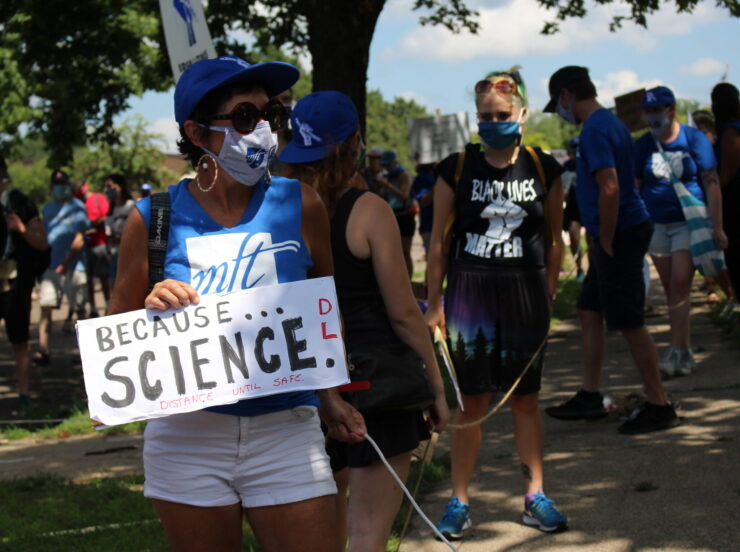
Schools will distribute one iPad to each family with one or more students in grades pre-K-2 and a Chromebook to each student in grades 3-12 who needs a computer. The district also will continue providing WiFi hotspots for some students. Low-cost internet service is also available to qualifying families through USI Internet and Xfinity.
A focus in August will be ensuring that schools have up-to-date contact information for all families, executive officer Suzanne Kelly said.
Teachers will take daily attendance based on participation in virtual lessons and activities or through individual communication with students and families.
Music, science, career-technical education, mental health and college counseling will continue to be provided remotely, as will supports for advanced learners, students who receive special-education services and English-language learners.
Take-home meal service will continue for all families who need or want it, and child care will be provided to the school-aged children of essential workers. (They will be required to wear face coverings at school.)
Teachers will be able to work in their school buildings if they want to, and all staff will have access to face shields.
The decision to resume the district’s A-F grading system (a pass-fail system was adopted in April in middle and high schools) was made out of a desire to keep students competitive for scholarships and college entry, according to associate superintendent Shawn Harris-Berry.
Students who have failed courses will be able to recover missed credits through a virtual program.
Two high school fall sports — football and volleyball — will be moved to 2021, per Minnesota State High School League orders, but there will be fall soccer, cross-country and girls tennis and swimming and diving seasons. More detailed plans on fall sports will be available Aug. 10.
The head of the district’s teachers union, Greta Callahan, said teachers are feeling a sense of relief about returning to distance learning, though they want to eventually resume in-person classes.
She said many teachers have asked to work from school buildings, noting internet within them is often stronger than at homes.
Shaun Lauden, who heads the education-support professionals union, said that funding and staffing levels will make returning to in-person classes a challenge.
“It’s really difficult to make it work the way it needs to in order for folks to be safe,” he said.
The district will begin professional development for teachers on Aug. 31, and students in Transition Plus and in grades 1-12 will begin school on Sept. 8. Pre-kindergartners and kindergartners will begin classes on Sept. 10.
